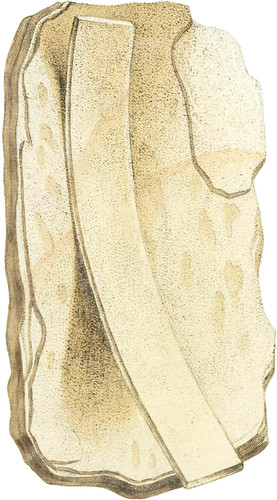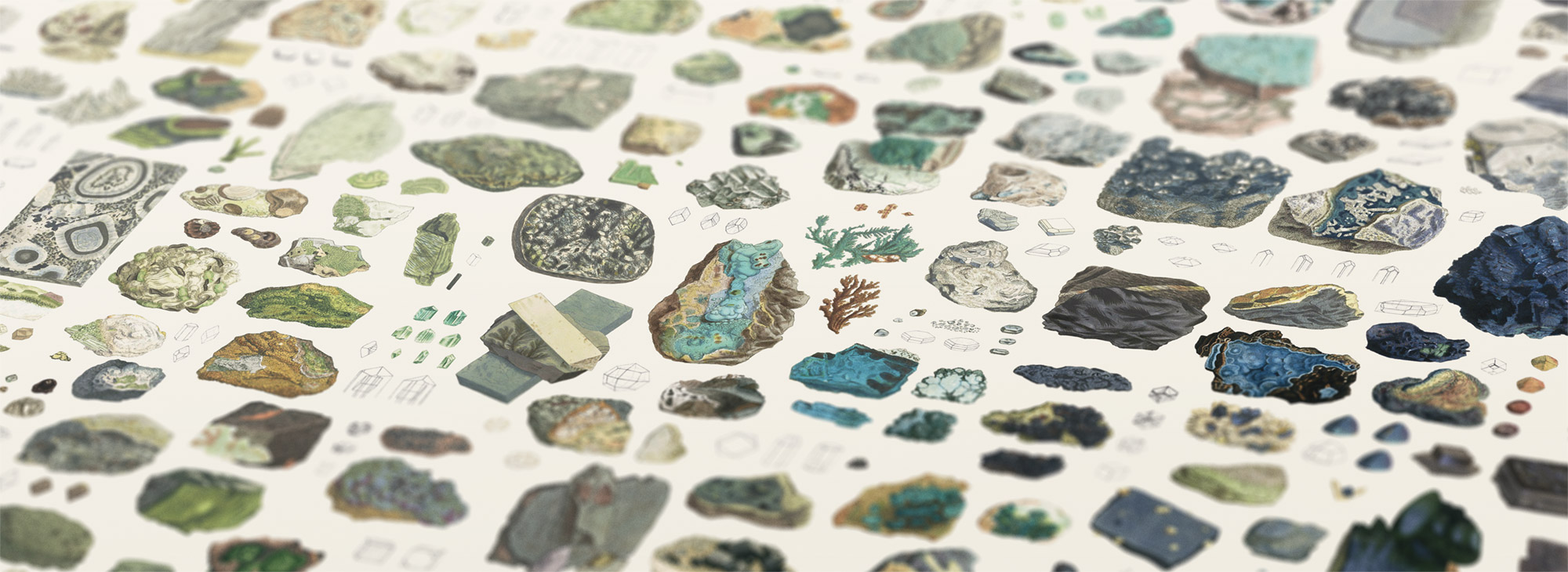 Enlarge
Enlarge
British Mineralogy
Flexible Marnesian Limestone
- Syn. Flexible Limestone. Annals of Philosophy, Vol. 4. p. 517.
Flexible Magnesian Limestone has been long known in the neighbourhood of Sunderland, it lies in horizontal strata in the Marsden rock, about five miles distant, southward, near the sea. It was not procured for scientific research till lately; at first it w;is rather plentiful, but I understand it has now become rare.
Flexible Siliceous Sandstone from Brazil has long been considered as a curiosity, and certain Limestones have been made flexible by means of heat; the dark marble of the Black rock near Cork, has been observed by the Masons to be flexible when in thin and long strips, yet I believe none of these are so flexible as the present, which I cannot but consider as a curious independent addition to British Mineralogy, not being known abroad in the magnesian rocks; indeed the Sandstone above mentioned is scarcely, if at all, noticed in many mineralogical works. The kind from Sunderland has the appearance and feels like a fine-grained Sandstone, and is of a light yellowish brown colour; soiling the lingers or having- an earthy softness similar in that respect to common Chalk. It has a somewhat fœtid odour when scraped while damp. It is laminated and will divide into various thicknesses, being generally sold in pieces of a foot to two feet or more long, and from a quarter of an inch to three-eighths in thickness: it may be bent most when wet, and returned straight again. I got a piece 14 inches long, 2 inches wide, and one twentieth of an inch thick; when dry it seemed hazardous to bend it more than 33/4 inches, (for I had broken similar pieces in such attempts) but in water or while the water was perceptible in it, it bent 43/4 inches, when it broke.
We are obliged to Dr. Thompson for his analysis published in the Annals of Philosophy,
| Carbonate of Lime | 62.00 |
| Carbonate of Magnesia | 35.96 |
| Insoluble matter | 1.60 |
| Loss | 0.44 |
| 100.00 |
Dr. Thompson says this Magnesian Limestone has been long burnt in the neighbourhood, and sent to the South and North, and no complaints have been made of it as a manure, and some affirm that Carbonate of Magnesia is not injurious to land. Dr. Wollaston considers it as a granular magnesian Carbonate of Lime cemented by common Carbonate of Lime. It seems a floated settlement, and sometimes flattened empty or air spaces are conspicuous in it; that these spaces tend to promote its flexibility seems probable, and the looser laminae of the mass are in general most flexible, but this stone does not appear to possess the elasticity of Bitumen, which Mr. Hatchett thinks owes that quality to its spongy texture and the air contained in its cells. Whether the effect of the sun’s warmth contributes to its flexibility, as heat does to make marble flexible, may be but little doubted, as I have a piece which admitted some fibres of roots or Rhizomorpha betwixt its laminæ. In bending it feels firmer than the flexible Sandstone of the Brazils, that giving a loose shaking sensation to the hand.
There are other flexible stones such as Gypsum, Talc Mica, Asbestus, one variety of which, figured in tab. 122. bears much general resemblance in appearance to this, its flexibility, however, depends upon its fibrous structure. A sort of Sandstone, elastic and flexible in water, was brought from the beach of liuynau near Canton, in the Chinese Seas; it is above half an hundred weight, and is compared to a piece of Boiled Beef; it was bought at an hundred guineas value, and I believe is now in the possession of Mr. Mawe.

